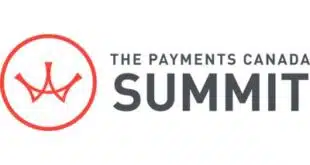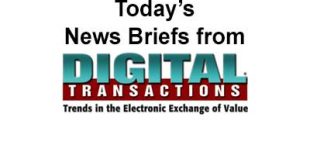There’s nothing wrong with the U.S. payments business that government mandarins can fix. For proof, look no further than recent history.
The U.S. payment system is the most competitive and innovative in the world. It continues to improve notwithstanding politicians’ and regulators’ meddling and their efforts to politicize payments.
The U.S. has several dozen traditional and alternative retail, peer-to-peer, bill-pay, and interbank payment networks. Established payment systems work well, have critical mass, and are a habit. Consumers and businesses take their value and convenience for granted.
Incumbents and challengers, nevertheless, continue to deploy entrepreneurial verve and capital to try to enhance and even disrupt the existing system. People have rarely known they needed particular enhancements to payments systems, until they arrived.
Policymakers can speculate about, but can’t possibly know, what new vectors of payments competition and innovation will be successful. There is a danger that government interventions, intentionally or unintentionally, will put a damper on these efforts.
Other than the Fed’s interbank payments systems, digital dollars on the central bank’s balance sheet, and Federal Reserve notes distributed through banks, the U.S. payments system is dominated by private-sector banks, traditional and alternative payment systems, processors, and fintechs.
Banks play a critical role in payments and are where most funds move. As a legacy of interstate and branch-banking restrictions, the U.S. has more banks than any other country on Earth. At the peak in 1921 there were 30,456 commercial banks. By September 2024, the number had fallen 87% to 3,966.
Their vast resources, reach, and scale give colossi like Chase, BofA, Wells Fargo, and Citi distinct advantages. The ever-increasing regulatory burden further disadvantages small banks. There are tradeoffs between efficiency and innovation. A handful of banking giants would be more efficient, but thousands of smaller banks, sometimes on their own, and often with nonbank partners, are a source of payments experimentation and innovation.
With American Express, Discover, Mastercard, and Visa vying for share, the U.S. credit card network market is the world’s most competitive. Consumers have enormous choice, and convenient revolving credit is widely available across the risk spectrum. More than 82% of adult Americans have at least one credit card, most of which have rewards and no annual fee.
Nevertheless, politicians on the left and populist right are demagoguing for destructive credit card interest rate caps, which would reduce credit availability. In 2024, the Consumer Financial Protection Bureau tried to slash credit card late fees to $8, which would make it more difficult to serve risky consumers and encourage delinquency.
The US debit network market, too, is the most competitive on the planet. The number of U.S. ATM and debit networks peaked at 130 in the mid-1980s and at 44 in the mid-1990s, respectively. With merger activity, it has consolidated to 16 debit networks, with Visa, Mastercard, Discover, Fiserv, and FIS each owning two, and China UnionPay having a de minimis share.
Politically Unsympathetic
Mergers can increase scale, capabilities, and delivery footprints, intensifying payment-network competition. Mastercard acquired the ATM network Cirrus in 1985. Visa acquired a third of the Plus ATM network in 1987 and the remainder in 1993. It acquired the Interlink debit network in 1991.
Discover acquired the Pulse debit network in 2005. In 2006, at Morgan Stanley’s “Under the Hood” conference, chief executive Ken Chenault entertained the idea of American Express entering the debit network market. The idea took a while to gestate. In 2021, AmEx started issuing its own debit card.
Notwithstanding robust competition and value for consumers, Washington can’t resist trying to direct the market. In September, the Justice Department filed an antitrust suit against Visa, the leading debit network. The action won’t improve competition, innovation, or consumer value.
Politicians and regulators have tried to score political points pillorying Capital One’s proposed acquisition of Discover. If Washington doesn’t block it, this combination will rock the market, particularly boosting debit-network and card competition.
The Dodd-Frank Act imposed price controls on politically unsympathetic large banks’ debit-interchange fees, which fund fee-free accounts and cards, rewards and benefits, and issuer innovation. By diktat, the CFPB capped large banks’ over-limit fees at $5—a punitive and overtly political move.
There are three at-scale electronic P2P payment systems, Zelle, PayPal/Venmo, and Cash App, plus traditional money-transfer networks like Western Union, MoneyGram, and Ria.
In perhaps what was his last hurrah, Rohit Chopra’s CFPB sued banking titans BofA, Chase, and Wells Fargo, contending they’re not preventing fraud on Zelle.
All payment systems have fraud. The trick is to balance user convenience and security, which the industry dynamically does. If you impose enough restrictions on a payment system, you can nearly eliminate fraud—but you can also make the system unusable.
No Cigar
Regulatory poohbahs, no matter how bright, can’t divine what consumers and businesses want or need in payments.
Nobody “needed” mobile payments before they existed. Now, consumers and businesses take for granted the ability to make and receive payments anywhere and anytime on mobile phones.
Open banking was pioneered in the 1990s. If consumers value open banking, some banks will embrace it as a way of differentiating themselves. As has been its wont, the CFPB issued an open-banking rule that was baldly political, exempting banks and credit unions with under $850 million in assets.
Buy now, pay later systems providing low-friction, generally fee-free short-term consumer credit are winning share. In May 2024, the CFPB issued an interpretative rule with no basis in law redefining BNPL services as credit cards to give borrowers comparable dispute rights. Ensuring full disclosure of financial services’ material features is in the bureau’s mission. Mandating features, however attractive they may be, is not.
Evangelists have enthused that digital currencies would disrupt the reigning payment systems. So far, no cigar.
The first digital currency, Digicash, launched in 1989 and shuttered in 1998. It didn’t solve a problem. The first digital-ledger-based cryptocurrency, Bitcoin, debuted in 2009. As of December 14, 2024, there were 496 cryptocurrencies with a market capitalization greater than $100 million. While they’ve been successful in niches, they’ve yet to make inroads in licit mainstream payments.
Some want Washington to participate in, and prop up, cryptocurrencies. Republican Senator Cynthia Lummis’s Bitcoin Act would have the government make a huge speculative bet by buying up to a million bitcoins. This disguised federal borrowing would inflate bitcoin’s price.
With a more digital-currency-friendly administration, stablecoins, the largest of which are backed 1-to-1 by dollar-denominated assets, have the potential to be the 21st Century’s electronic analog of banknotes. While none will be anonymous like cash, reasonable privacy provisions can be built in.
Notwithstanding higher velocity than traditional commercial bank money, they should be low risk. In that vein, subject to prudential regulation, stablecoins could instead be subject to fractional reserves, enabling them to support more credit.
A Poor Track Record
Digital wallets can be platforms to more conveniently manage payment credentials, payment systems, or both.
PayPal was the first general-purpose digital wallet to achieve critical mass. It wasn’t designed in Washington. In “Cashless Revolution,” Martin Chorzempa documents how super apps in a narrow window of regulatory laissez-faire revolutionized China’s payments markets.
Many hoped—and some, like lame-duck CFPB Director Chopra feared—the super-app model would dominate in the U.S. But while they continue to improve, PayPal, Apple Pay, Google Wallet, and Cash App don’t approach the 100-proof super-app model pioneered by Alipay and WeChat Pay. Consumers haven’t seen a compelling need.
Interbank payments have high barriers to entry. Nonetheless, the U.S. has multiple competing payment networks enabling value transfer between bank accounts. The Fed spent $545 million to implement its instant interbank payment system FedNow. The central bank isn’t directing the private sector. It’s competing with it.
Prudential regulators focus on preventing failure. Their track record is poor. The financial system’s paramount regulator, the Fed, was blindsided by the financial crisis in 2008.
In the runup to that crisis, Fed Chairman Ben Bernanke said “the effect of the troubles in the subprime sector on the broader housing market will likely be limited, and we do not expect significant spillovers from the subprime market to the rest of the economy or to the financial system.”
In March 2023, Silicon Valley Bank’s collapse was the third-largest bank failure in U.S. history. It was doomed by an asset-and-liability mismatch. SVB had a highly concentrated deposit base—short-term liabilities and a huge portfolio of long-term mortgage-backed securities its regulars deemed safe from a credit perspective and encouraged it to hold.
However, when interest rates soared, the value of SVB’s assets plunged, depositors fled, and the bank crashed. There was nothing exotic about the risk. SVB’s chief regulator, the San Francisco Fed, was asleep at the switch.
The Night Watchman
Policymakers worry about money laundering, fraud, tax evasion, other criminal activity, and systemic risk.
A competitive payment system that permits experimental innovation and failure will produce more innovation and strengthen the entire system. In philosopher and risk engineer Nassim Taleb’s framework, it’s anti-fragile. The system becomes more resilient as resources are continually allocated from weaker or flawed to stronger players.
Payment systems including Debitman, Revolution Money, CurrentC, Softcard, Beenz, Flooz, Mondex, Cybercash, First Virtual, Pay by Touch, Carte Blanche, and Bling Nation all failed, and the entire payment system didn’t miss a beat. All major payment-system crises in the modern era have been caused by governments massively debasing their money. Venezuela and Zimbabwe are grim and vivid examples.
The lesson from all this? Policymakers should aim for a light, transparent, and ruthlessly and impartially enforced regulatory regime, with regulators playing the role of the nightwatchman, with like rules for like activity, and low to modest entry barriers.
—Eric Grover is principal at Intrepid Ventures.




